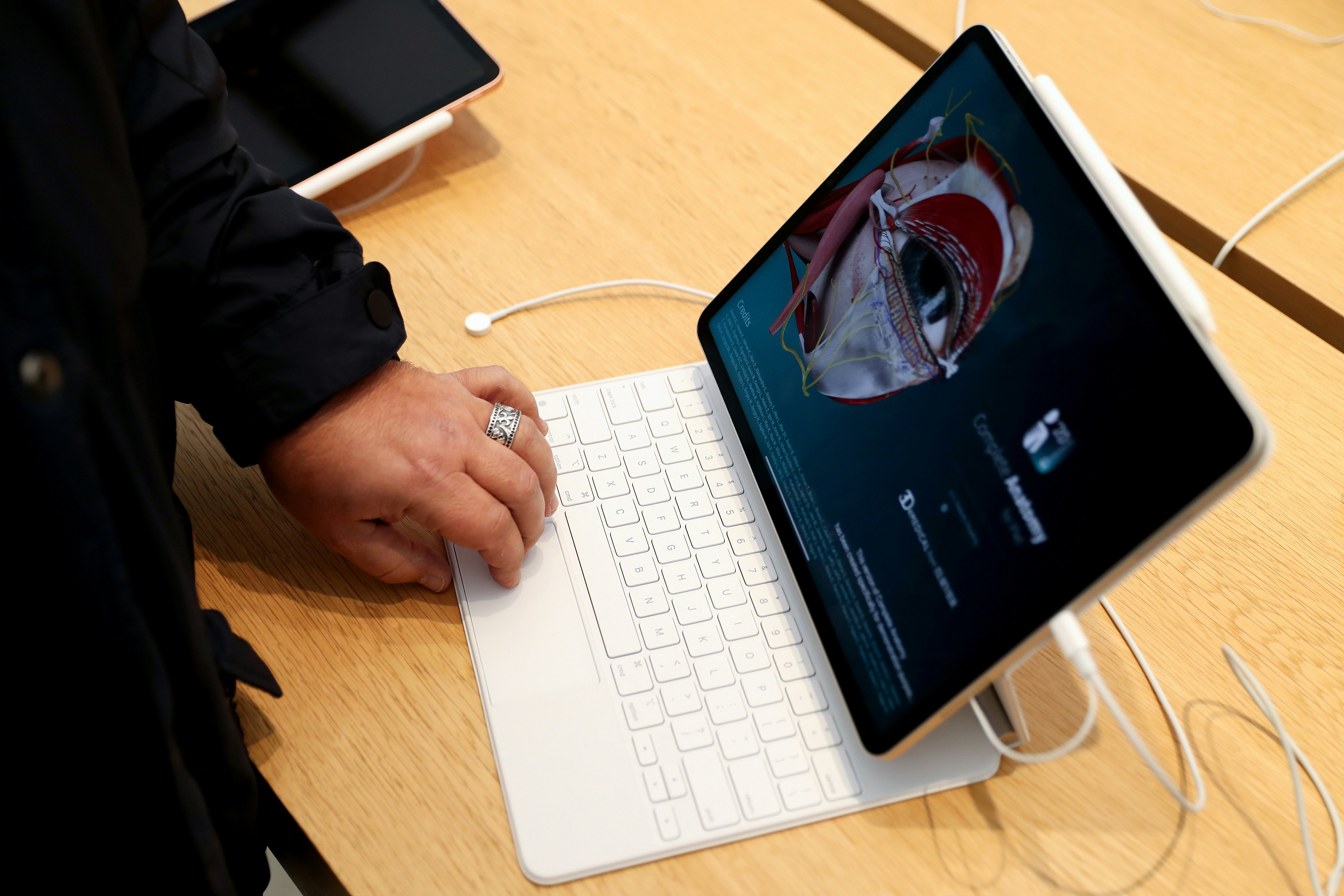
The Apple Pencil was introduced just over eight years ago in 2015 alongside the first iPad Pro.
It was both a tacit admission that there were some things fingers just weren’t good at — detailed handwriting and drawing, for example — and a sign that Apple was interested in positioning its popular tablet as more than just an iPhone with a bigger screen.
With an Apple Pencil, the iPad could finally be a solid device for real work, and maybe even the future of computing. As Apple famously asked: What is a computer?
The iPad story in 2023 is interesting. Accessories like the Magic Keyboard and software features like Stage Manager are tangling it up in what a laptop is rather than what a tablet could be. But if you ask me, the most interesting thing about an iPad is how it differs from a MacBook, and right now that has everything to do with the Apple Pencil.
A human tool
Introducing an official stylus to the iPad had a tremendous impact on the art world because it eliminated the need for additional drawing tablets to access critical features like pressure and tilt sensitivity. Two-in-one laptops and desktops existed that could become digital drawing surfaces just like the iPad, but they weren’t nearly as portable or affordable as an iPad. A cottage industry for capacitive styli for iPad existed before then for a reason — pencils and pencil-like things are naturally, historically, familiar to humans.
British artist David Hockney is probably the highest-profile artist working on the iPad, but you don’t have to go far on YouTube, TikTok, or Instagram to find dozens of working professional illustrators and designers who do all or most of their work with an iPad, especially now that popular creation tools like Adobe Photoshop, Illustrator, and Lightroom are widely available. Remember when The New Yorker published a cover issue that was “painted” using an iPad?
With iPadOS 14, Apple expanded the Pencil’s capabilities with a software feature called “Scribble” that allowed the stylus to be more of a universal input method. If there was a blank text field on the iPad you could scribble in it and iPadOS would translate your chicken scratch into printed text. It remains by no means a perfect alternative to typing, but it’s helpful.
What’s disappointing is that, save for the addition of “hover” detection in new M2 iPad Pros that lets you interact with some interface elements without touching an Apple Pencil to an iPad’s display, nothing has really changed about how the iPad or Apple Pencil work. Widgets come and go, the Stage Manager gets more or less strict about the size of app windows, but how you interact with your tablet stays frustratingly the same.
Even more laptop

Apple’s strategy going forward seems like more of the same. Next year’s iPad Pros will reportedly come in a new larger 13-inch size, use OLED displays rather than the micro-LED, and support a redesigned aluminum Magic Keyboard that makes the tablet look even more like a MacBook, according to Bloomberg.
Despite rumors suggesting a more adventurous reimagining of the Apple Pencil with magnetic tips, Apple’s recently released Apple Pencil (USB-C) sits in a confusing middle position between the original Apple Pencil and the second-generation version, with the design of the latter but missing features of the former.
Even if Apple adds an M3 chip and an increasingly complex iPadOS, the iPad can only disappoint as a laptop replacement. We’ve been having the same arguments over whether the iPad can or can’t replace your primary computer for years now. A new screen and keyboard are unlikely to change that. Only a decision from Apple to actually differentiate the iPad from its other products will.
A more tablet-y iPad
There are some practical reasons the iPad exists in this holding pattern. The most pressing is that the iPad is going to be the source of many of the Vision Pro’s first apps while developers work on native mixed reality experiences. Apple also remains committed, at least on paper, to making the process of taking an iPhone app to iPad, and even Mac, as seamless as possible. The iPad using a drastically different interaction method or interface would make those ports more difficult than Apple likely wants them to be.
But given how well touch and Pencil input work, it’s hard to not wish for something more distinct and tablet-y. Maybe that’s a new folding screen that turns the iPad into even more of a digital “book” than it already is, or maybe it’s a version of iPadOS that seems designed with what the iPad is good at, rather than meeting the needs of iPhone and Mac users somewhere in the middle. That could be some kind of way of “right-clicking” with the Apple Pencil for more contextual information. Maybe a shortcut menu that pops up when you grab the Pencil from charging on the side of an iPad. Or maybe an interface where searching for and navigating between apps is driven by writing and drawing gestures. It would likely mean the Apple Pencil would have to be bundled with the iPad rather than be a price-y add-on, but anything is possible.
The new Final Cut Pro for iPad is proof Apple can figure out touch and stylus-driven versions of its previous mouse-and-keyboard desktop apps. Why not do that for the rest of its software suite? Make the iPad something driven at least in part by Apple Pencil input, rather than leaving it as an an optional afterthought. Until then, the iPad will get better, but only at being the awkward middle ground between an iPhone and a Mac, and not its own distinct device.






